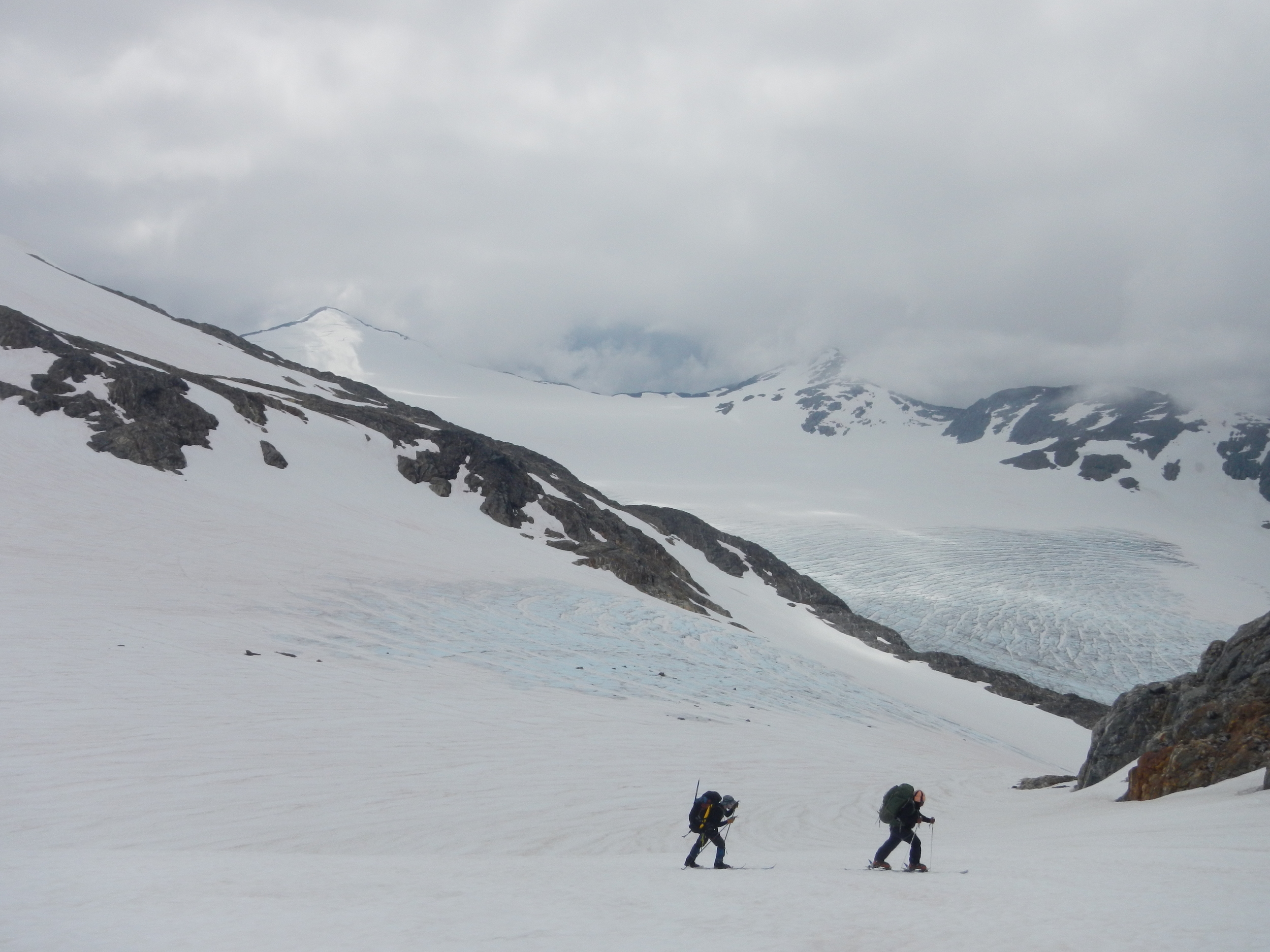by Mary Radue
Ever since the beginning of JIRP we’ve been hearing about the magical holiday of JIRPmas. On July 25 all members of JIRP would gather together, eat delicious food, and exchange homemade gifts. We listened to stories about memorable JIRPmas presents of the past and eagerly looked forward to this icefield-specific holiday.
Unfortunately, on JIRPmas day we found ourselves dispersed across the icefield. Some people were stationed at Camp 10 maintaining normal camp life, while others had ventured off to the Northwest Branch of the Taku Glacier to dig mass balance pits in the cold rain. On the 25th I found myself traversing to Camp 18 with Ben, Newt, Hannah, Mike, Kate, and Barbara to open the camp before all the other trail parties arrived.
We left Camp 10 in the fog and began our trek to Camp 18. The fog turned into a drizzle, the drizzle into sleet, and sleet into snow. Even though we couldn’t see the surrounding mountains, travelling through the impressive snowflakes landing on our packs and skis and noses was truly magical. I felt lost in winter even though it was the middle of the summer. I grew up in Maryland, where snow on Christmas is by no means a guarantee, so when I saw fresh snow six months after Christmas in the middle of summer, I could not believe my luck. We sang JIRPmas songs (composed by altering Christmas songs ever so slightly) and continued on our way to Camp 18.
Snowy traverse to Camp 18, photo by Barbara Burger
Thankfully, Kate (our camp manager) decided that it was necessary to celebrate JIRPmas formally on July 31st when we were for the most part united at Camp 18. Everyone drew names out of a tin can for the gift exchange and got to work making presents. The time, effort, and thoughtfulness that people put into their presents were astounding. It was great to see everyone’s different approaches, ideas, and hidden artistic talents.
On JIRPmas day (round two) we ate a JIRPmas feast of potatoes, fresh salad, lentils and beans, with pumpkin pie for dessert. After the mass balance trail party got back late, we gathered around the JIRPmas tree constructed with ski poles and paper ornaments. The sunset illuminated the mountains rosy pink and the mountains beyond the Gilkey Trench looked like shadows stretching on forever. With the stunning landscape as our backdrop, Kelly dressed in a bright orange jump suit and passed out our gifts.
Everyone gathered around the JIRPmas tree while Kelly handed out gifts. photo by Barbara Burger
Some people received thoughtful gifts like a JIRP survival kit and a mailbox full of compliments. Other presents were perfectly tailored to the person, like a hat to help fight nose bleeds or a model snow machine. Some presents were outright ridiculous and others were undeniably beautiful, like a painting of a mountain landscape. It was wonderful to see how well we have gotten to know each other and how close we have become. Even though our resources were extremely limited, people produced some amazing gifts that were full of thoughtfulness and care. JIRPmas allowed us to recognize, appreciate, and solidify the strong bonds that we have made while at JIRP. It is rare to live in such a strong, close-knit community and I will miss the ability to share such joyful moments with so many wonderful people when JIRP is over.
Danielle shows off her anti-nose bleed hat. photo by Maya Smith



























